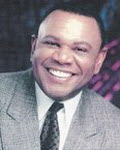Dental Care: Toothbrush Tips For Kids
There are so many designs for toothbrushes. How does anyone know what to select? Here are some tips from a pediatric dentist to make the right decision and get the most out of your purchase.
Let's begin with pre-schoolers. Toothbrushes should have extra soft bristles with small, rounded heads. The handles should be larger for a good grip. Some toothbrushes have rubber on the handle to make them slip-proof. A colored area on the bristles indicating the correct amount of toothpaste to dispense can be helpful. Do not permit your pre-schooler to chew on his or her toothbrush or run with a toothbrush in his or her mouth. You should do the brushing until six years of age. No toothpaste should be used until after age two.
The six-year molars erupt (come in) behind the primary (baby) molars in the back of the mouth. When they begin to erupt, it is time for another toothbrush design. This brush should have a larger head to accommodate the larger permanent teeth and a longer tuft of bristles on the end of the head. As the six-year molars erupt, they are lower than the teeth that are beside them. A toothbrush with a longer set of bristles at the end, an end tuft, is better for cleaning erupting molars.
Around age twelve, when the twelve-year molars are erupting, use the same style brush with an end tuft, but the head should be larger.
During orthodontic treatment, a toothbrush that can clean around the braces is necessary. These brushes will have a short row of bristles in the center and two longer rows on the outside. They will clean around the brackets more effectively. A tiny brush, called an interdental brush, is used for cleaning areas that are hard to reach. Your orthodontist will instruct you regarding the extras needed for good dental care during orthodontic treatment.
All brushes, for all ages, should have soft bristles. Hard bristles are hard on gums. As soon as the bristles look frayed, the toothbrush should be replaced. It is impossible to clean teeth properly with a tattered toothbrush. Replacement may be once a month for some heavy-duty brushers and less often for those with a healthier gentle technique.
All toothbrushes should be rinsed thoroughly with hot water before and after brushing. Rinsing toothbrushes has been shown to reduce the growth of bacteria on the bristles between brushing.
Toothbrushes should be replaced after any illness. If a strep infection is being treated, the toothbrush should be replaced. The strep grows on the toothbrush and can reinfect your child. When you pick up your prescription, also pick up two new toothbrushes. Begin a new toothbrush 24 hours after the antibiotic is started and begin the second toothbrush upon completion of the antibiotic. The same holds true for acrylic orthodontic appliances. They must be disinfected during a strep infection because strep grows on appliances too.
Because viruses and bacteria are growing on the toothbrush bristles during an illness, do not touch the toothpaste tube with the bristles of the toothbrush. Place the toothpaste on a clean finger for transfer, or if the child has herpes, place the toothpaste on a cotton swab for transfer to the toothbrush.
What about the power or electric toothbrushes? Do they do a better job of cleaning? Yes, yes, yes! The first electric brush can be used at age six when children begin to do their own brushing. They must be kept clean and the heads should be changed when the bristles become frayed. The head can be soaked in mouthwash containing alcohol for disinfecting if an illness occurs just after starting to use a new brush. Keep all mouthwash out of the reach of children!
Bedtime brushing is the most important time of day. Morning brushing may be done before breakfast, but after breakfast is more important. After you have purchased the appropriate toothbrush for your child, the only thing left is for you to say, at least twice each day, USE IT!!!
By Jane A. Soxman, DDS
«« Back to Dental Information Center
Your health and appearance are our major concerns at the Interstate Dental Clinic. However, let us not forget the importance of the chewing function of healthy teeth. Let our team deliver the honest, loving dental care you deserve.
New Patient Special
To acquaint you with our office, as a new patient, we are offering you $25.00 off your first Complete Oral Exam, X-rays and Routine Cleaning. Take advantage of this opportunity to safeguard your smile.
Mouthwash Is Important, Too!
Brushing and flossing may not be enough. The ADA now recommends using an antimicrobial mouthwash to reduce plaque and prevent gingivitis.






